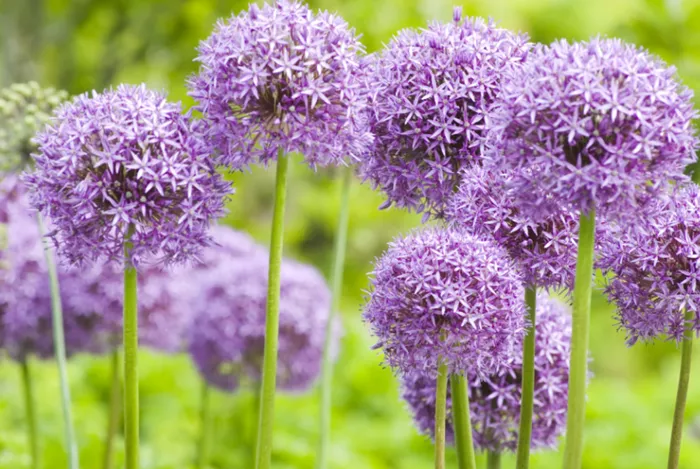Consider Planting Flowering Onions for a Vibrant Spring Garden.
As October progresses, it’s time to prepare for next year’s garden. If your daffodils and other flowering bulbs did not thrive this spring, consider planting flowering onions. These bulbs are beautiful and require minimal care. You can purchase some when selecting your spring flowering bulbs, which should be planted later this month.
Although it’s still a couple of weeks until the ideal time for planting spring bulbs, particularly if the weather remains mild and the soil is not yet cool, now is a great time to reflect on last year’s spring flowers. Evaluate how well your bulbs performed. If they suffered from pests or diseases, consider changing or adding new varieties to your garden.
Why Choose Alliums?
One excellent option to enhance your garden is alliums, or ornamental flowering onions. These bulbs offer numerous benefits and can become a highlight of your spring display.
Allium flowers make stunning cut flowers and come in various heights, ranging from six inches to four feet. Notably, they are resistant to common garden pests like deer, mice, moles, and voles. Additionally, alliums can self-sow if you leave their seed heads intact after blooming, allowing them to return each year.
Alliums also complement other spring bulbs beautifully, including daffodils, hyacinths, tulips, and crocuses.
For instance, the “Gladiator” variety grows tall and features large purple flowers, while “Mount Everest” produces striking white blooms. Alliums can bloom alongside perennials such as daylilies, rudbeckias, and echinaceas, as they typically flower later in the season.
If you’re looking for smaller flowering bulbs for rock gardens or borders, consider “drumstick allium,” which displays red and green flowers. “Allium ceruleum” blooms in steel blue, and “allium moly” produces bright yellow flowers.
Gardening Questions Answered
Will a Black Walnut Tree Harm a Nearby Apple Tree?
Question: I have a black walnut tree that is around 25 years old. I’ve heard it can be toxic to other plants. The previous owners planted an apple tree close to it. Will the walnut harm the apple tree? If so, how far away should I plant it for safety?
— Melanie, in Brandon
Answer: Yes, the apple tree will be highly susceptible to the toxins from the black walnut. The walnut’s root system contains chemicals that can harm many plants, especially apple trees. The University of Wisconsin provides a list of plants sensitive to black walnut.
To protect the apple tree, plan to move it next spring. Relocate it at least 50 to 60 feet away from the walnut tree to ensure it is outside the walnut’s root zone.
Why Is My Hydrangea Not Flowering?
Question: I have a hydrangea that has not flowered for the past two years. It looks healthy but doesn’t produce blooms. I suspect it’s not a problem with soil acidity, as we have spruce trees nearby and have had plenty of rain. What could be the issue?
— Sandy, via email
Answer: You are correct that hydrangeas benefit from wet summers, and as long as the spruce trees are not overly shading them, they should thrive. Hydrangeas typically do best with morning sun and afternoon shade.
If you have a hydrangea macrophylla, which features large blue flowers, the problem may relate to how it forms flower buds. This type of hydrangea produces buds on old stems. If the plant dies back to the ground in winter, it may not flower at all, or it may bloom late.
To protect the hydrangea during winter, apply a foot-deep layer of wood chips over the plant towards Thanksgiving or early December, avoiding coverage of the top. This will safeguard the lower buds from severe winter conditions. In spring, remove the mulch and hopefully enjoy blooms.
Related topics:
- Volunteers Plant Over 1,000 Trees to Boost Spokane County Conservation Area’s Ecosystem
- 12 Blue-Flowering Spring Bulbs to Plant This Fall, According to Our Expert Gardener
- East Lansing Allocates Five-Year Plan for Invasive Plant Removal


